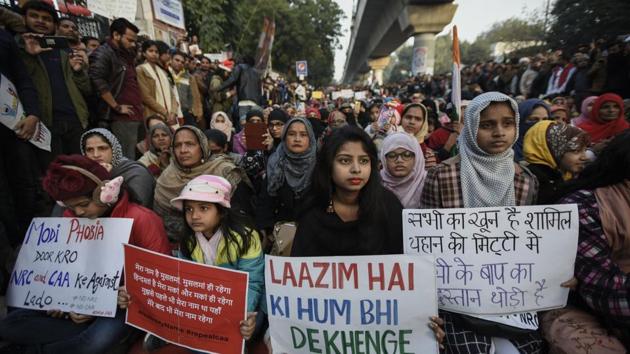Anti-CAA protests: The assertion of nationalism and idealism
The protests have signalled the arrival of a new young constituency. And the BJP has alienated it
Many attempts have been made to slander the young women and men who have taken to the streets to stand up against the Citizenship (Amendment) Act and the proposed National Register of Citizens (NRC). It may be convenient for the Bharatiya Janata Party (BJP) to believe that this is an agitation fuelled by the Opposition or by the “anti-national” radicals, whom even Prime Minister Narendra Modi referred to as “urban naxals”.

The government could not be more wrong. This student revolt is a spontaneous mainstream movement. It is the most significant pushback to the Modi government since it first won in 2014. It is also the first time in six years that a pall of fear has lifted. The voluble critics of the NRC and CAA projects are aware that they may not win the war, but they are willing to go to battle anyway.
Though multiple parallels have been drawn to demonetisation because of a similar reckless and counterintuitive impulse that drove both decisions, there is one critical difference. The government’s messaging on demonetisation was much smarter. It was able to present the decision to withdraw 86% of India’s cash from circulation as one triggered by a mass clean-up plan. More critically, it was able to tap into the country’s subliminal class war and lull India’s poor into believing that the rich had to stand in line for money just like them. Hence, despite the hit to the economy, there were no street protests against the move. In fact, the BJP was able to sweep the Uttar Pradesh elections within a few months of the disruptive move.
This time, the young men and women leading the marches and sit-ins across India are impervious to both sophistry and slurs. Nor are they representing the political Opposition.
The students I met at the protests in the heart of the Capital underlined how disappointed they were with the Congress in particular. A young man said for a party to be “run by dynasts in today’s age makes them modern-day oligarchs”. Another was cynical about “the Gandhi family hijacking our protest”. They laughed out loud at the suggestion that they were affiliated to any political group. Talking to them drove home two points: First, the people are leading the Opposition, and not the other way around. And second, there is a growing appetite for a new centrist, socially liberal Opposition party. Among the young people, there is fierce disenchantment and disillusionment with the citizenship project’s move to divide Indians. And there is still no political alternative they prefer or see hope in.
It is a grave political misstep by the BJP to dismiss the anger and idealism of the young. When the Delhi Police stormed the campus of Jamia Millia Islamia in Delhi and horrific videos emerged — of female students encircling their male friends to shield them from a rain of lathis, or young men ducking for cover under urinals and broken glass — the BJP miscalculated the anger that would almost spread across universities. As one party member told me in private, “We thought these would remain Muslim protests. Instead they have become pan-India student protests.”
Notwithstanding the focus by the BJP on violence and arson — the unequivocal condemnation of aggression by students, the fact that the protests have remained largely peaceful and the inescapable detail that the violence has only taken place in states where the police reports to the BJP — means that the charge has been unable to stick.
The lazy trope of “anti-national” has not worked either. In fact, the carefully chosen symbols of the protest — Mahatma Gandhi, BR Ambedkar, Bhagat Singh, the Tricolour, the singing of the national anthem, the mass reading of the preamble to the Constitution — all of these are assertions of new nationalism.
Yes, Muslims are also reclaiming their nationhood in an age when electoral politics has sometimes pushed them to the margins. They are shrugging off the “Go To Pakistan” trolls of social media armies with the contempt they deserve. And they are parking other debates and disagreements — on social mores, on religious interpretations, on politics, on uniform civil code — for the time being. This movement is about first retrieving their rightful political voice. But the protests are not by India’s Muslims alone. In fact, they are driven by a spirit of constitutionalism and by heady youthful optimism.
In a country where two-thirds of the population is under the age of 35, it should not be so difficult to understand the youthful optimism of this agitation. That and the heady adrenalin push of believing that the country you were born in will be shaped by you.
We have often judged millennials and post-millennials for being apathetic and politically disengaged. The citizenship debate has fundamentally altered that. This is a new political constituency. And the BJP has already alienated it.





